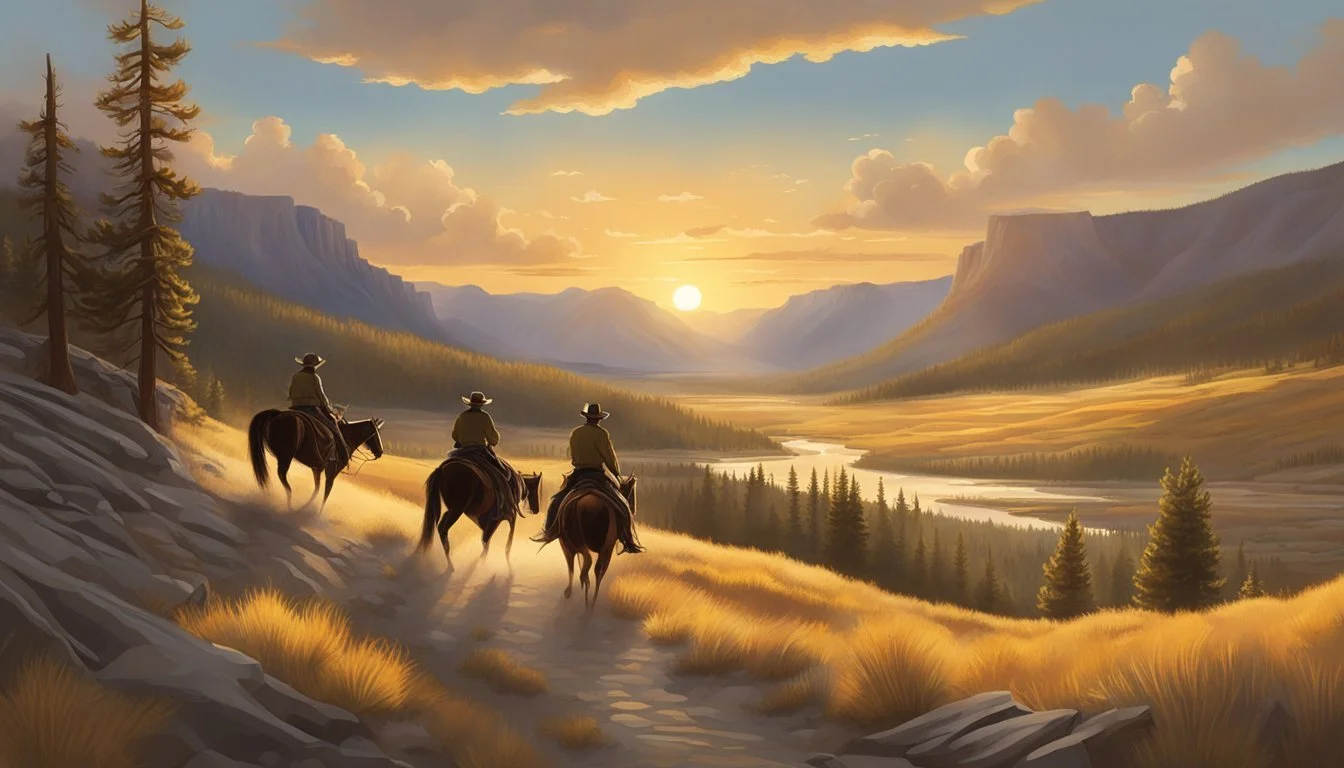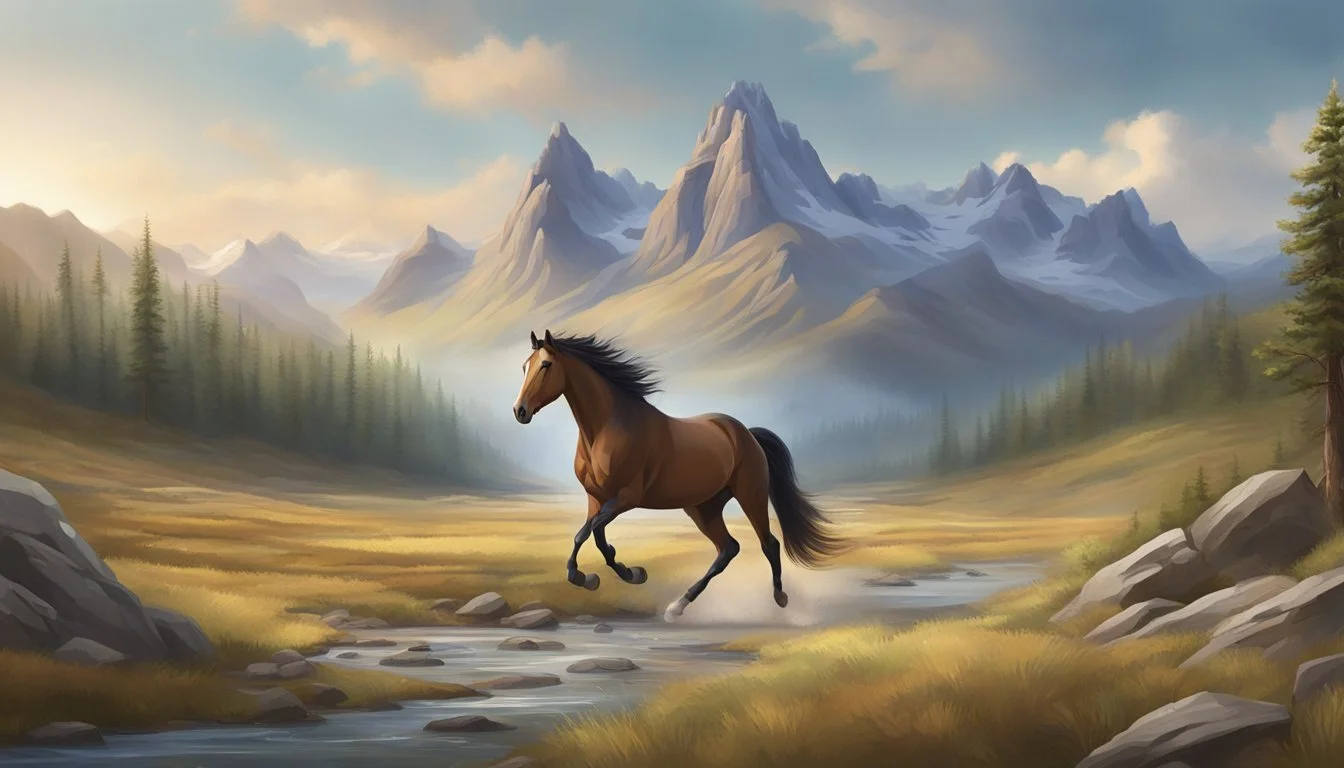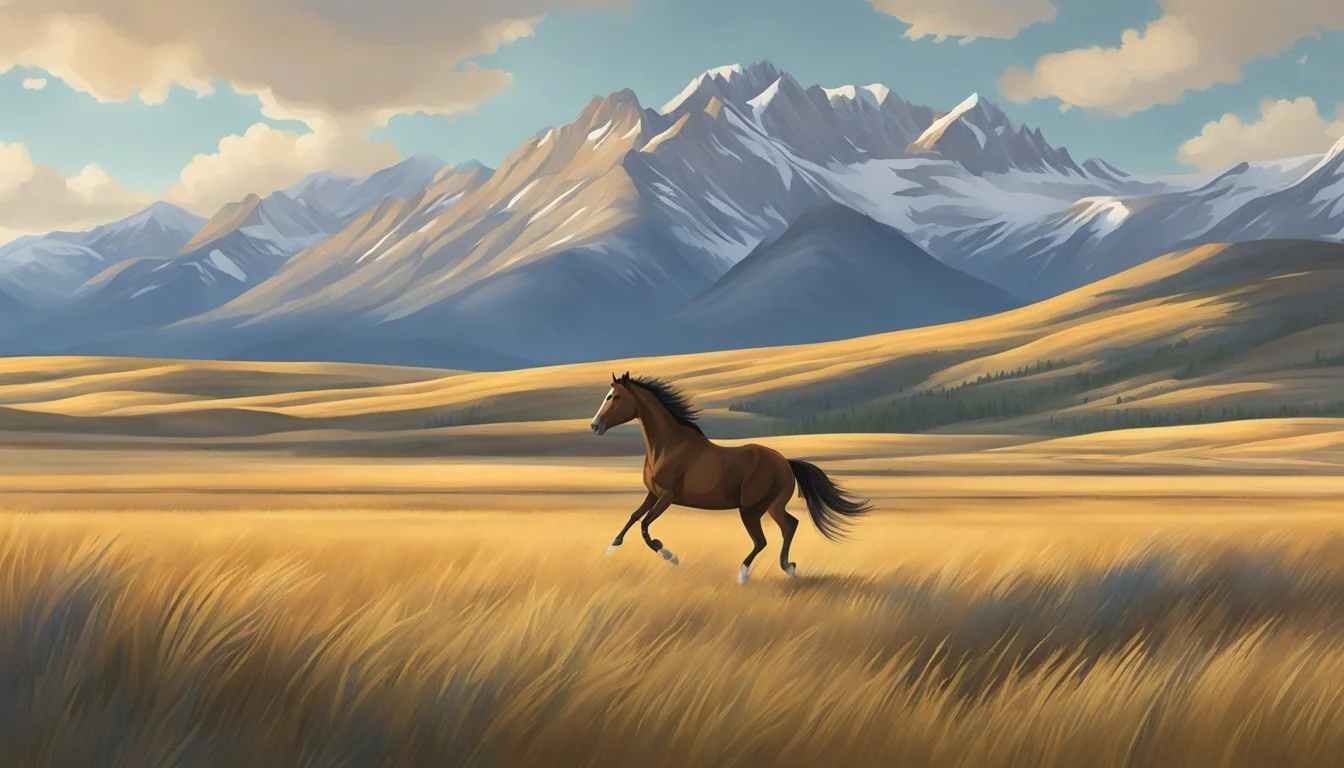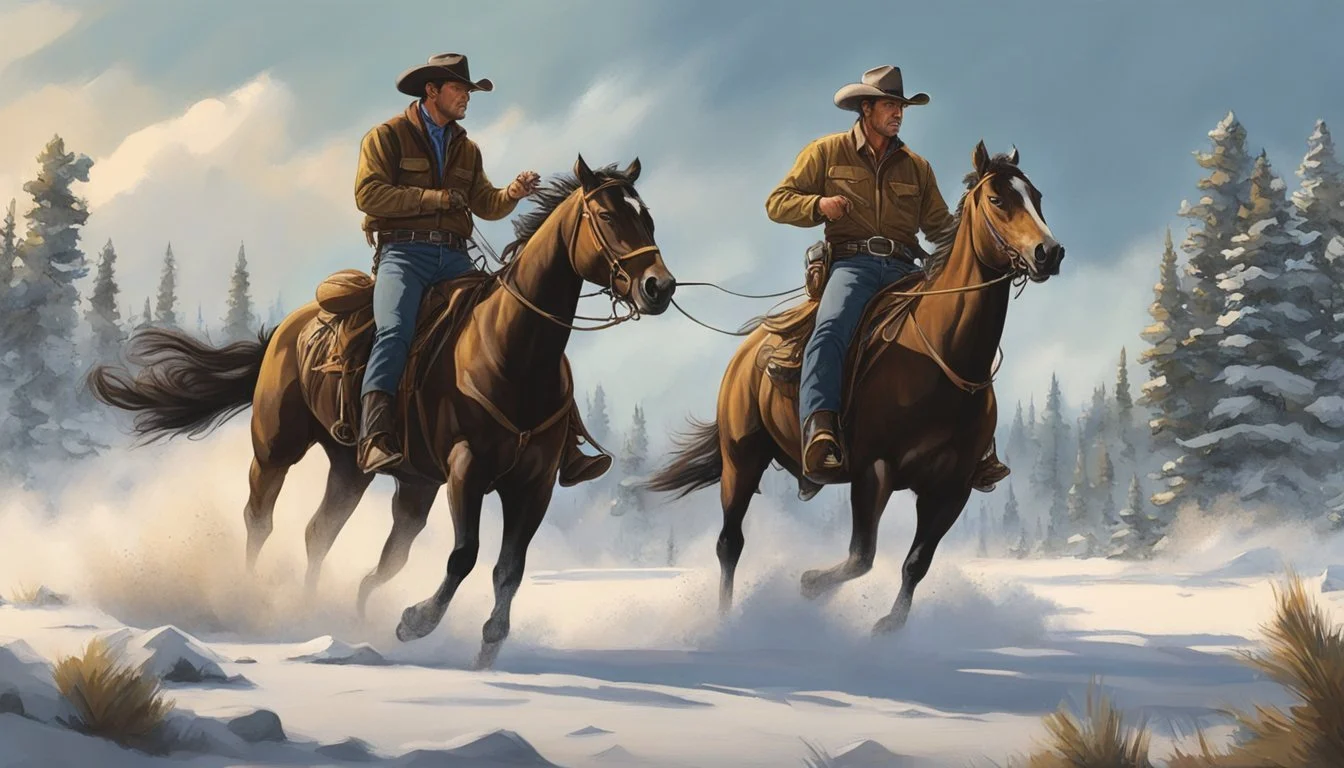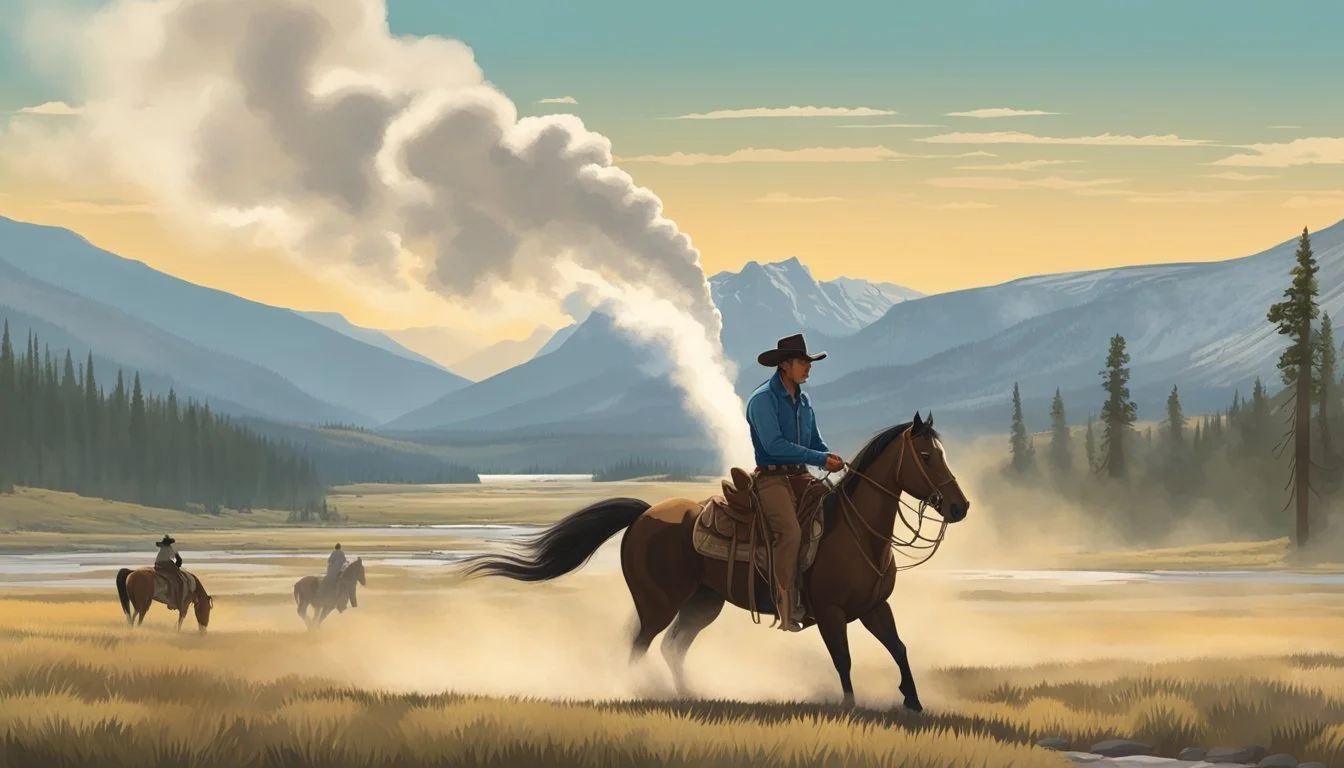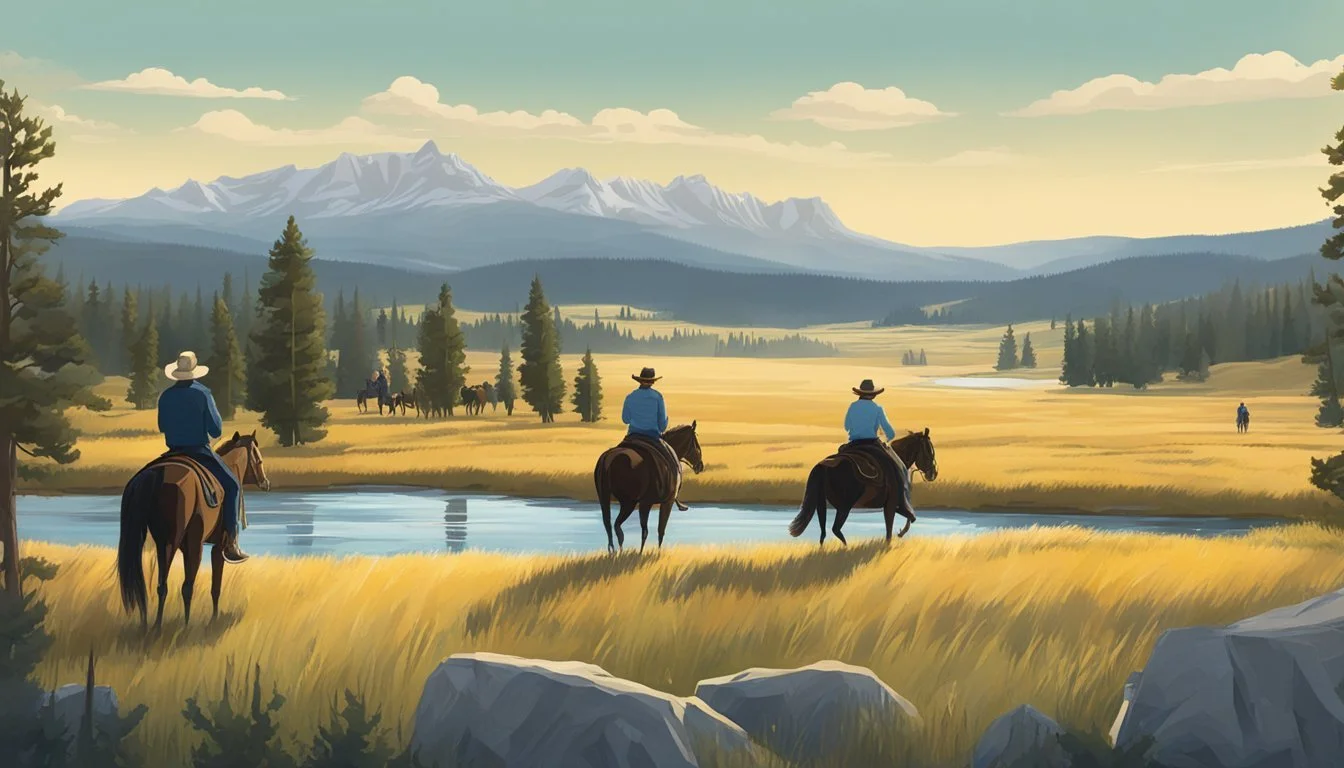Yellowstone Ignites a Cultural Revolution: The Heartland's Battle for the American Dream
Yellowstone, the hit television series that debuted in 2018, has captured the hearts of millions of Americans with its rugged portrayal of Montana ranch life and complex family dynamics. The show's authentic representation of rural values and high-stakes conflicts over land and legacy has struck a chord with viewers across the country, particularly those in rural areas.
Yellowstone's success lies in its ability to tap into the essence of the American Dream, presenting it through the lens of a traditional Western setting. The Dutton family's struggle to maintain their vast ranch against external threats resonates deeply with audiences who value independence, hard work, and the preservation of a way of life that seems increasingly threatened by modernization.
The series has become a cultural phenomenon, revitalizing the Western genre for a new generation and sparking renewed interest in cowboy culture. Its influence extends beyond entertainment, impacting fashion trends, boosting tourism in ranch country, and even shaping public discourse on issues of land ownership and rural identity. Yellowstone's wide appeal has transformed it from a niche drama into a touchstone of contemporary American culture.
The Allure of Yellowstone and the American Dream
Yellowstone captivates rural viewers by embodying timeless ideals of the American West. The show's rugged landscapes and traditional values resonate deeply with those who cherish notions of independence and self-reliance.
Exploring the Essence of Yellowstone
Yellowstone's appeal lies in its authentic portrayal of ranch life and cowboy culture. The Dutton family's struggles to maintain their vast landholdings strike a chord with rural audiences. The show's depiction of horsemanship and cattle management reflects real practices that have defined Western ranching for generations.
Expert riding techniques and the bond between cowboys and their horses take center stage. This focus on equestrian skills celebrates a core aspect of American West heritage.
Yellowstone's breathtaking Montana scenery serves as more than a backdrop. It becomes a character itself, representing the untamed beauty many rural viewers cherish.
The American Dream Embodied in Rural Narratives
For many rural viewers, the American Dream is intrinsically tied to land ownership and preserving a way of life. Yellowstone taps into this sentiment through the Duttons' fierce protection of their ranch.
The show explores themes of legacy, family, and the challenges of maintaining traditional values in a changing world. These narratives resonate with viewers who see their own aspirations and fears reflected on screen.
Yellowstone's characters embody the self-reliant spirit associated with the American West. Their tenacity in facing adversity aligns with ideals of rugged individualism.
The series also delves into conflicts between tradition and progress, mirroring real-world tensions in rural communities. This nuanced portrayal adds depth to the show's exploration of the modern American Dream.
Characters and Casting
The Dutton family and their allies form the core of Yellowstone's compelling narrative. Complex characters with deep backstories drive the plot forward through their intense relationships and conflicting motivations.
The Dutton Family Legacy
John Dutton, portrayed by Kevin Costner, anchors the series as the patriarch fighting to preserve his family's ranch. His children Beth, Kayce, and Jamie each embody different aspects of the Dutton legacy. Beth Dutton, played by Kelly Reilly, is a fierce businesswoman with a razor-sharp wit. Kayce Dutton struggles to balance his loyalty to the ranch with his own family.
Jamie Dutton's character arc explores themes of identity and belonging. The Dutton family dynamics are marked by both fierce loyalty and bitter rivalries. Their interactions reveal the complexities of maintaining power and tradition in the modern West.
Complex Characters Driving the Plot
Yellowstone's characters are far from one-dimensional. Each possesses a mix of admirable traits and deep flaws that make them relatable and unpredictable. The show excels at character development, gradually revealing layers to even minor players.
Conflicts arise not just from external threats, but from the characters' own desires and mistakes. This adds depth to the storytelling and keeps viewers invested. Supporting characters like Rip Wheeler and Monica Long provide different perspectives on ranch life and family loyalty.
The cast's performances bring these nuanced characters to life. Their portrayals capture the grit and vulnerability required to survive in Yellowstone's unforgiving world.
Themes of Yellowstone
Yellowstone explores complex themes of power, family, and cultural identity against the backdrop of Montana's rugged landscape. The show delves into the intricate dynamics of land ownership, generational legacies, and the clash between traditional values and modern pressures.
Power Struggles and Land Rights
The Yellowstone Dutton Ranch serves as the epicenter of fierce power struggles. John Dutton fiercely defends his vast landholdings against developers, government officials, and rival ranchers. These conflicts highlight the tensions between preserving rural ways of life and embracing economic progress.
Land disputes form a central narrative thread. The Duttons face threats from real estate developers seeking to carve up their ranch for profit. This storyline resonates with rural viewers concerned about urban encroachment and changing land use patterns.
The show portrays the complexities of property rights in the American West. It examines the legal and ethical questions surrounding land ownership, particularly in areas with historical ties to Native American tribes.
Family Loyalty and Justice
The Dutton family's unwavering loyalty forms a core theme. John Dutton's children navigate complex relationships while striving to protect their father's legacy. This emphasis on family bonds reflects traditional values often associated with rural communities.
Justice in Yellowstone often takes unconventional forms. The Duttons frequently operate outside the law to protect their interests. This vigilante approach raises moral questions about the nature of justice in areas where formal legal systems may be perceived as inadequate.
The show explores the concept of legacy through the lens of family dynamics. Each Dutton child grapples with their role in preserving the ranch for future generations, reflecting real-world concerns about agricultural sustainability and inheritance.
Cultural Preservation and Native American Rights
Yellowstone tackles the complex issue of Native American rights through the character of Thomas Rainwater. As chairman of the Broken Rock Indian Reservation, Rainwater seeks to reclaim ancestral lands from the Duttons.
The show highlights ongoing struggles for cultural preservation. It portrays efforts to maintain traditional practices and languages in the face of modernization and assimilation pressures.
Land rights disputes between the reservation and surrounding communities mirror real-world conflicts. Yellowstone explores the legal and historical complexities of tribal sovereignty and land claims.
The series also examines the economic challenges facing Native American communities. It portrays efforts to balance cultural preservation with economic development, including controversies surrounding casino projects.
Cinematic Influences and Taylor Sheridan's Vision
Taylor Sheridan's unique approach to storytelling has redefined the Western genre for modern audiences. His vision blends classic elements with contemporary themes, creating a new style of television drama.
Neo-Western Genre and Modern Influences
Sheridan's work on "Yellowstone" exemplifies the neo-Western genre. He incorporates traditional Western tropes while addressing current issues facing rural America. The show draws inspiration from iconic films like "The Godfather" and "Giant", combining family saga with power struggles.
Sheridan's other projects, including "1883", "1923", and "6666", expand on this neo-Western approach. These series explore different time periods and settings within the American West, offering fresh perspectives on familiar themes.
His films "Sicario", "Wind River", and "Hell or High Water" also contribute to the neo-Western genre. These works tackle modern challenges in rugged frontier settings, further cementing Sheridan's reputation as a pioneer in this cinematic style.
Interconnected Stories and Shared Themes
Sheridan's vision extends beyond individual shows, creating a interconnected universe of stories. "Yellowstone" serves as the centerpiece, with spin-offs and related series expanding the narrative world.
"Mayor of Kingstown" and "Tulsa King", while not Westerns, share thematic elements with Sheridan's other works. These series explore power dynamics, family loyalty, and the complexities of American society.
Across his projects, Sheridan consistently examines the American Dream, its promises, and its pitfalls. His characters often grapple with moral dilemmas, blurring the lines between right and wrong in their pursuit of success and survival.
The Influence of Yellowstone on Popular Culture
Yellowstone has made a significant impact on American popular culture, reshaping entertainment, fashion, and social media trends. The show's blend of Western themes and contemporary issues has resonated deeply with audiences across the country.
Fashion Trends and Social Media Resonance
Yellowstone's influence on fashion has been substantial. Cowboy hats, ranch wear, and Western-inspired clothing have seen a surge in popularity. Major retailers now stock Yellowstone-inspired merchandise, from rugged outerwear to accessories. Social media platforms showcase fans emulating the Dutton family's style, with hashtags like #YellowstoneFashion trending regularly. Instagram and TikTok are filled with content creators recreating looks from the show, driving further interest in Western fashion.
The show's aesthetic has also influenced interior design trends. Rustic decor, leather furnishings, and nature-inspired elements have gained traction among viewers seeking to bring a piece of the Yellowstone ranch into their homes.
Television Drama Series and Western Genre
Yellowstone has revitalized the Western genre for modern audiences. Its success has paved the way for spin-offs and similar shows, creating a new wave of Western-themed content. The series blends traditional Western elements with contemporary storytelling, addressing current issues while maintaining the genre's classic appeal.
The show's popularity has influenced network programming decisions. More Western dramas and rural-set series have been greenlit, hoping to capture Yellowstone's audience. This shift has brought renewed attention to the American West's history and culture.
Yellowstone's impact extends to streaming platforms, where it consistently ranks among the most-watched shows. Its success has highlighted the demand for high-quality, character-driven dramas set in rural America.
Rural Values and Modern Realities
Yellowstone portrays a complex intersection of rural values and modern challenges. The show tackles issues like land development, Native American rights, and family legacy, resonating with rural viewers who see their experiences reflected on screen.
The Dutton family saga has sparked discussions about land ownership, preservation, and the changing face of rural America. These themes have entered public discourse, influencing conversations about rural policy and development.
Yellowstone's depiction of ranch life has increased interest in agricultural tourism. Dude ranches and Western-themed vacations have seen a boost in popularity as viewers seek to experience the lifestyle portrayed in the show.
Montana's Role in Yellowstone
Montana's rugged landscapes and ranching heritage play a crucial role in shaping the world of Yellowstone. The state's natural beauty, cultural traditions, and evolving socioeconomic challenges form the backdrop for the show's compelling narratives.
Environmental Conservation and Ranching Culture
Montana's ranching culture is deeply intertwined with environmental conservation efforts. The state's vast open spaces and iconic wildlife serve as both a setting and a source of conflict in Yellowstone. Ranchers often find themselves at odds with conservationists and government agencies over land use and wildlife protection.
The show highlights the delicate balance between preserving Montana's natural heritage and maintaining traditional ranching practices. Characters grapple with issues like wolf reintroduction, water rights, and grazing permits on public lands.
Yellowstone portrays the ongoing struggle to reconcile economic necessities with environmental stewardship. This tension reflects real-world challenges faced by Montana ranchers and conservationists alike.
Breathtaking Vistas and Cultural Identity
Montana's stunning landscapes are more than just a backdrop in Yellowstone; they're a character in their own right. The show's cinematography showcases the state's majestic mountains, sweeping prairies, and pristine rivers.
These breathtaking vistas reinforce Montana's cultural identity as a place of rugged beauty and untamed wilderness. The characters' deep connection to the land reflects many Montanans' real-life attachment to their surroundings.
Horseback riding scenes capture the essence of Montana's cowboy culture. These moments not only showcase the state's natural splendor but also emphasize the enduring importance of horsemanship in ranch life.
Tourism plays a significant role in Montana's economy, and Yellowstone's popularity has increased interest in visiting the state. The show's portrayal of Montana's landscapes has likely contributed to this trend.
Real Estate Development and Gentrification
Yellowstone addresses the complex issue of real estate development and gentrification in Montana. The show depicts the growing pressure on ranchers to sell their land to wealthy outsiders and developers.
This storyline mirrors real-world concerns in places like Bozeman, where rapid growth and rising property values threaten traditional ways of life. The influx of new residents and businesses brings economic opportunities but also challenges local culture and affordability.
The series explores the tension between preserving Montana's rural character and embracing economic growth. Characters debate the merits of development versus maintaining the state's agricultural heritage.
Yellowstone's portrayal of these issues raises awareness about the real-world impacts of gentrification on Montana's communities and landscapes.
The Socio-Political Landscape in Yellowstone
Yellowstone's narrative interweaves complex socio-political themes that resonate with rural American viewers. The show explores land disputes, government influence, and political machinations against the backdrop of Montana's rugged terrain.
Land Ownership and Property Rights
The Dutton family's struggle to maintain their vast ranch forms the core of Yellowstone's plot. Their fight against developers, corporations, and other entities seeking to acquire their land reflects real-world tensions in rural America.
Property rights emerge as a central theme, with the Duttons fiercely defending their legacy against encroaching interests. This storyline taps into viewers' concerns about preserving family heritage and traditional ways of life.
The show portrays the economic pressures facing modern ranchers, including rising costs and changing markets. It highlights the clash between long-standing agricultural practices and new environmental regulations.
Government Overreach and Tribal Sovereignty
Yellowstone doesn't shy away from depicting conflicts between local landowners and government agencies. The series showcases the frustration many rural Americans feel towards perceived bureaucratic interference in their lives.
Tribal sovereignty plays a significant role in the show's narrative. The fictional Broken Rock Reservation's struggles with state and federal authorities mirror real-world issues faced by Native American communities.
The series explores the complex relationships between tribal lands, private property, and public lands. It depicts the ongoing negotiations and tensions between these different stakeholders.
Political Intrigue and Corruption
Political corruption features prominently in Yellowstone's storylines. The show portrays a web of alliances and betrayals involving local politicians, business leaders, and ranchers.
Backroom deals and power plays are common occurrences, reflecting viewers' cynicism about political processes. The series doesn't hesitate to show how personal interests often drive political decisions.
Yellowstone also touches on the influence of money in rural politics. It depicts how wealthy individuals and corporations attempt to shape policies and development plans to their advantage.
The show's portrayal of political maneuvering extends to tribal politics, adding another layer of complexity to its socio-political landscape.
The Diverse Audience of Yellowstone
Yellowstone has attracted a wide-ranging viewership, spanning rural and urban areas alike. The show's appeal transcends geographical boundaries, drawing in audiences through its portrayal of American values, technological accessibility, and authentic representation.
Appeal to Rural Areas and the American Ethos
Yellowstone resonates deeply with rural viewers, who see their lives and values reflected on screen. The show's portrayal of ranching culture and the cowboy ethos strikes a chord with those living in America's heartland. It captures the essence of rural life, showcasing the challenges and triumphs faced by communities often overlooked in mainstream media.
The series taps into the American Dream, depicting characters fighting to preserve their way of life against external pressures. This struggle mirrors the real-world experiences of many rural Americans, fostering a strong connection between viewers and the show's narrative.
Yellowstone's exploration of land ownership, family legacy, and individual rights aligns with core American values. This alignment contributes to its broad appeal across different regions of the country.
Technological Advancement and Viewing Trends
Streaming platforms have played a crucial role in expanding Yellowstone's reach beyond its initial audience. The show's availability on multiple platforms has made it accessible to viewers across various demographics and locations.
Rural areas, once limited in their entertainment options, now have equal access to high-quality content through improved internet infrastructure. This technological advancement has allowed Yellowstone to penetrate markets that were previously underserved by traditional television networks.
The show's success has also influenced viewing trends, encouraging more content creators to explore rural themes and settings. This shift has led to a more diverse representation of American life on screen, catering to previously underrepresented audiences.
Representation and Authenticity
Yellowstone's commitment to authenticity has garnered praise from diverse viewers. The show's accurate portrayal of ranch life, including its challenges and intricacies, has earned respect from those familiar with the lifestyle.
The series also addresses complex issues facing rural communities, such as land disputes, economic pressures, and cultural tensions. This nuanced approach appeals to viewers seeking more than just entertainment, as it provides insight into real-world issues.
While the show has faced criticism for its predominantly white cast, it has made efforts to include Native American characters and storylines. This representation, though limited, has opened up discussions about Indigenous issues and their portrayal in media.


